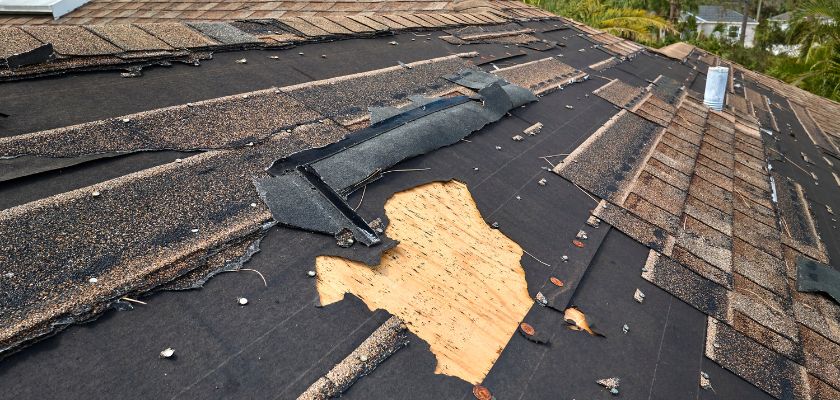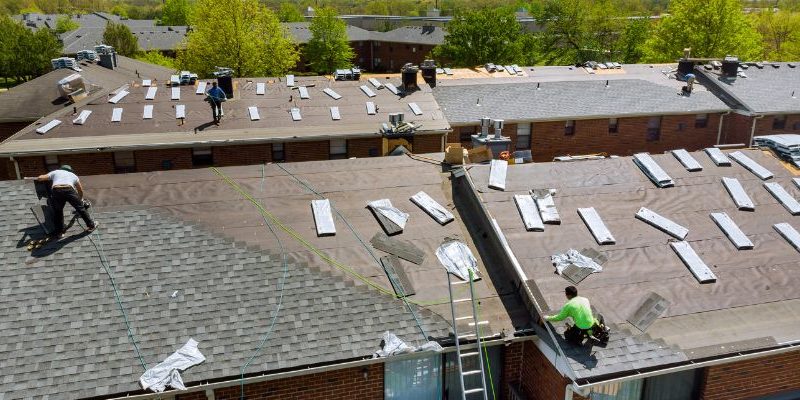Replacing a roof is one of the most significant and costly home improvement projects a homeowner can undertake. It’s not just about selecting a new material and watching the contractors work; it involves careful planning, understanding the various options, and knowing what to expect throughout the process. In this guide, we’ll walk you through everything you need to know about the roof replacement process, from choosing the right roof replacement material to understanding the timeline and steps involved.
Table Of Contents
Understanding When Roof Replacement Is Necessary

Before diving into the roof replacement process, it’s essential to understand when a roof replacement is necessary. Many homeowners might be unsure if they need a full replacement or if repairs will suffice.
Signs That You Need a New Roof
Several signs indicate that it might be time for a new roof. These include missing or damaged shingles, frequent leaks, visible sagging, and extensive wear and tear. If you notice any of these signs, it’s crucial to consult with a roofing professional to assess the condition of your roof.
The Role of Inspections
Regular roof inspections can help identify potential issues before they become major problems. A professional inspection can reveal hidden damage, such as problems with the roof deck or underlayment, that might not be visible from the ground. Inspections are particularly important in areas prone to severe weather, like Mesquite, TX, where roofs are exposed to harsh conditions that can accelerate wear.
Deciding Between Repair and Replacement
In some cases, minor repairs can extend the life of your roof, but when the damage is extensive or the roof is nearing the end of its lifespan, a full replacement is often the best option. Understanding the balance between cost, long-term benefits, and the condition of your current roof will help you make an informed decision.
Choosing the Right Roof Replacement Material
One of the most critical decisions you’ll make during the roof replacement process is choosing the right roof replacement material. The material you select will impact the longevity, appearance, and performance of your new roof.
Popular Roofing Materials
There are several popular roofing materials to choose from, each with its advantages and disadvantages. Asphalt shingles are the most common due to their affordability and ease of installation. They offer good durability and come in various colors and styles. However, they may not last as long as other materials.
Metal roofing is another option that has grown in popularity. It is highly durable, energy-efficient, and can last 50 years or more with proper maintenance. Metal roofs are also resistant to severe weather, making them an excellent choice for roof replacement in Mesquite, TX, where storms and high winds are common.
Tile and slate roofs offer a premium look and are known for their longevity, often lasting over 100 years. However, they are more expensive and require a stronger structural support due to their weight.
Factors to Consider When Choosing a Material
When selecting a roof replacement material, consider factors such as climate, budget, aesthetic preferences, and the existing structure of your home. For instance, in areas like Mesquite, TX, where summers are hot and the weather can be unpredictable, materials that offer good heat resistance and durability are essential.
Additionally, consider the long-term maintenance needs of each material. Some materials, like metal or slate, require less frequent maintenance compared to others, which can save money and effort over time.
Sustainability and Energy Efficiency
With growing concerns about environmental impact, many homeowners are considering sustainable roofing options. Materials like metal, clay tiles, and certain asphalt shingles are now available with energy-efficient coatings that reflect more sunlight, reducing cooling costs. These options not only benefit the environment but can also lead to significant savings on energy bills.
The Roof Replacement Process: Step-by-Step
Once you’ve decided on the material and the timing, understanding the roof replacement process itself is crucial. Knowing what to expect can help reduce stress and ensure that the project goes smoothly.
Preparing Your Home for Roof Replacement
Before the roofing crew arrives, there are several steps you can take to prepare your home. Start by removing any vehicles from the driveway to provide clear access for the contractors. It’s also wise to cover or move outdoor furniture and plants to protect them from debris.
Inside your home, take down any pictures, mirrors, or other items hanging on the walls. The vibrations from the roofing work can cause these items to fall. Additionally, consider protecting valuable items in the attic, as debris and dust can make their way into the space during the project.
The Removal of the Old Roof
The first major step in the roof replacement process is the removal of the old roof. The roofing team will start by stripping off the old shingles, underlayment, and any other materials down to the roof deck. This step is crucial as it allows the contractors to inspect the underlying structure for any damage that needs to be repaired before installing the new roof.
In some cases, if the roof deck is in good condition, the process will move quickly. However, if there are signs of rot, water damage, or other issues, the deck will need to be repaired or replaced, which can add to the overall cost and time required for the project.
Installation of the New Roof
Once the old roof has been removed and any necessary repairs are made, the installation of the new roof begins. This process involves several key steps, including laying down the underlayment, installing flashing in vulnerable areas like valleys and around chimneys, and finally, placing the new shingles or other roofing material.
During the installation, it’s important to ensure that proper ventilation is considered. Good ventilation will extend the life of your new roof by reducing heat buildup and preventing moisture-related issues like mold and mildew.
What to Expect During and After Roof Replacement
Understanding what to expect during and after the roof replacement process can help you prepare for any potential disruptions and ensure that you’re satisfied with the final result.
Timeline and Project Duration
The duration of a roof replacement project can vary depending on several factors, including the size of your home, the type of roof replacement material chosen, and the weather. On average, a standard roof replacement can take anywhere from a few days to a week. However, more complex projects or those requiring significant repairs to the roof deck may take longer.
It’s important to keep in communication with your roofing contractor to understand the timeline and any potential delays. Weather can also play a significant role in the timing of the project, especially in regions like Mesquite, TX, where sudden storms can occur.
Managing Noise and Disruption
Roof replacement is a noisy and disruptive process. The removal of the old roof and the installation of the new one will generate a lot of noise, which can be inconvenient, especially if you’re working from home or have young children. Planning to stay out of the house during peak work hours can help minimize the disruption.
Additionally, be prepared for debris around your home during the project. A good roofing contractor will take measures to protect your property and clean up thoroughly after the work is done, but it’s still wise to take precautions, such as covering delicate plants or outdoor items.
Final Inspection and Cleanup
After the new roof is installed, a final inspection will be conducted by the roofing contractor to ensure that everything is completed to the highest standards. This inspection will check the integrity of the installation, ensuring that there are no missed areas and that the roof is properly sealed.
Once the inspection is complete, the crew will perform a thorough cleanup of the site, removing any leftover materials, nails, or debris. A magnet may be used to pick up stray nails from your yard and driveway.
Final Wording
Replacing your roof is a significant investment, but by understanding the process and making informed decisions, you can ensure that it’s done right. From choosing the appropriate roof replacement material to understanding the timeline and what to expect during the project, every step plays a crucial role in the success of your roof replacement. If you live in areas prone to harsh weather, like Mesquite, TX, it’s even more important to select durable materials and work with experienced professionals. With careful planning and the right choices, your new roof will protect your home for many years to come.
FAQ’s
1. How do I know if it’s time to replace my roof?
Signs that it may be time for a roof replacement include missing or damaged shingles, frequent leaks, visible sagging, and the roof reaching the end of its lifespan (typically 20-30 years for asphalt shingles). If you’re unsure, a professional inspection can help determine whether a full replacement is necessary.
2. What factors should I consider when choosing a roof replacement material?
When selecting a roof replacement material, consider factors such as climate, budget, aesthetic preferences, and the structural integrity of your home. For example, in Mesquite, TX, where the weather can be harsh, materials that offer durability and heat resistance, like metal or asphalt shingles, are often preferred.
3. How long does the roof replacement process typically take?
The duration of a roof replacement project depends on the size of your home, the type of material chosen, and weather conditions. On average, it takes a few days to a week. However, complex projects or those requiring additional repairs may take longer.
4. What should I do to prepare my home for roof replacement?
Before the roofing crew arrives, clear your driveway of vehicles, cover or move outdoor furniture and plants, and remove pictures or mirrors from interior walls. Protect valuable items in the attic, as debris and dust may enter the space during the project.
5. Is it possible to stay in my home during the roof replacement?
Yes, but be prepared for significant noise and some disruption. Roof replacement can be loud, especially during the removal of the old roof and installation of the new one. If you work from home or have small children, you might consider staying elsewhere during peak work hours.







